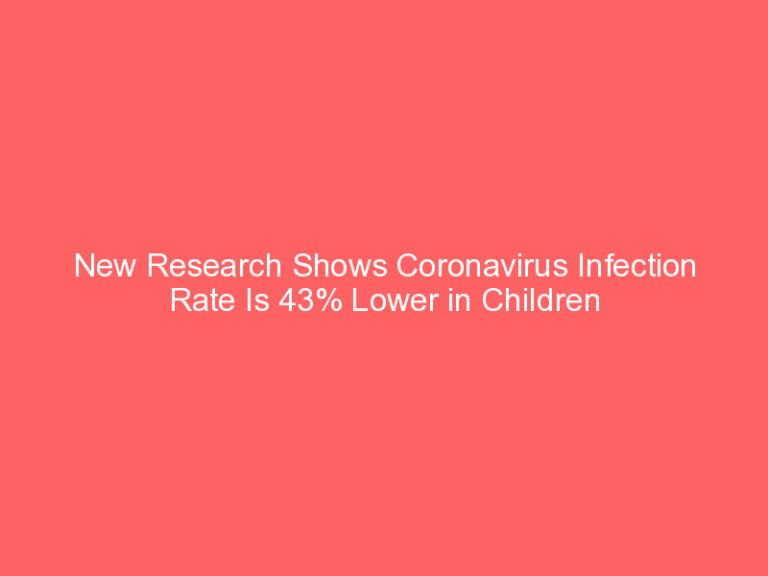In the past few months, new evidence has shown that children are less susceptible to coronavirus infection than adults. Now, an Israeli model on coronavirus transmission further adds to the research and shows that not only are kids less likely to have the infection but also to spread it to others around them.
To reach this conclusion, the researchers examined a total of six hundred and thirty-seven participants from Bnei Brak. These participants underwent different diagnostic tests for the coronavirus infection including serological antibody tests and PCR tests.
After the results were obtained, they were cross-checked with the rates of the infection as well as the general transmission rates of the city. It was then discovered that adults have much higher chances of developing the infection in comparison with adults.
Although the research on virus spread in children is ongoing, a number of contributing factors that make children less susceptible to the virus have already been identified. For example, researchers are already aware of stronger immunity in kids.
The majority of the children are immune to not only the coronavirus but also to various other infections.
Secondly, their underdeveloped sinuses can also prevent the infection from developing or becoming severe.
Read also: Deaths due to Heart Disease Increased Since the Start of Coronavirus Pandemic
On the other hand, adults do not only have developed sinuses but also other medical conditions which put them at a higher risk of having the infection as well as associated complications.
Lastly, there are a few studies that show that children have fewer ACE2 receptors than adults.
Since the SARS-CoV-2 virus attaches to ACE2 receptors to survive and divide, it cannot do so with a limited number of kids. However, the evidence for this theory is limited and needs further research.
Overall, the results of this study, which are published in PLOS Computational Biology are enough to show that children are indeed at a lower risk of having the infection and are also unlikely to spread the virus.
These findings contradict the results of older studies from the start of the pandemic which suggested that kids transmit the virus more often than adults. Hence, it can be said that children are not the primary drivers of coronavirus spread at homes or schools.
Other studies have also shown similar results.
For instance, one study based in Ireland looked at over forty thousand people and found that children under the age of fifteen are half as likely to have or spread the virus.
While the risk of severe infection and related complications is lower in children, it should be kept in mind that they still need to protect themselves. The chances of contracting the virus cannot be completely eliminated in any age group.
Therefore, children should also be taught to strictly follow guidelines such as wearing a mask and practicing social distancing measures, especially when going to school in the coming weeks or in other public places. Any negligence can result in catching the infection and spreading it further.
